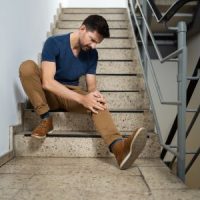Common Types Of Accidents Resulting From Inadequate Lighting

Inadequate lighting is a common hazard that can lead to accidents on someone else’s property. Whether it’s a poorly lit parking lot or a dimly lit stairway, insufficient lighting can increase the risk of accidents resulting in serious injuries.
If you were injured on someone else’s property due to inadequate lighting, contact Emerald Law Group to get legal help. Our Seattle inadequate lighting lawyers can help you determine who is liable for your accident and obtain the compensation to which you are entitled.
Inadequate Lighting and Premises Liability
If you have been injured on someone else’s property due to inadequate lighting, you may be entitled to compensation under the doctrine of premises liability. Property owners have a duty to provide adequate lighting to ensure the safety of their guests and customers.
However, you will have to prove that your accident was the result of the property owner’s negligence. For example, if the property lacked adequate lighting when the accident occurred, you might be able to establish the link between insufficient lighting conditions and your injury.
The property owner may attempt to avoid or reduce liability by claiming that the accident was the result of the injured visitor’s own carelessness. Under the pure comparative negligence law in Washington, the injured party’s compensation can be reduced in proportion to their degree of fault (RCW § 4.22.005).
What Are the Common Types of Accidents Resulting from Inadequate Lighting?
The most common types of accidents resulting from inadequate lighting include but are not limited to:
1. Slip & Fall Accidents
One of the most common types of accidents resulting from inadequate lighting is slip and fall accidents. When walking on a surface that is wet or uneven, it can be challenging to see potential hazards, such as a puddle of water or a raised tile. Without proper lighting, it can be nearly impossible to avoid slipping and falling, leading to bruises, cuts, broken bones, and head injuries.
2. Trip & Fall Accidents
Another common type of accident resulting from inadequate lighting is trip and fall accidents. Tripping over an object or uneven surface can result in severe injuries, especially if it catches you off guard. Whether it’s a piece of furniture left in a dark area or a frayed carpet edge, lighting is critical for identifying potential hazards and avoiding trip and fall accidents.
3. Stairway Accidents
Stairway accidents are one of the most dangerous types of accidents resulting from inadequate lighting. When walking up or down the stairs, it’s essential to have proper lighting to avoid missteps or losing your footing. Without adequate lighting, it can be challenging to see each step clearly, which can result in a dangerous fall down the stairs.
4. Violence
Inadequate lighting can also increase the risk of violent crimes, such as assaults and thefts. A dimly lit parking lot or alleyway can provide cover for criminals, making it easier to catch victims off guard. By providing adequate lighting, property owners can increase the visibility of potential threats and deter criminals from attempting a crime.
5. Auto Accidents
Inadequate lighting on the road can also lead to auto accidents. Without proper street lighting, drivers may have difficulty seeing road signs or other obstacles, which can increase the risk of a collision. Additionally, poorly lit parking lots can make it challenging to navigate and avoid cars and pedestrians, leading to accidents and injuries.
Speak with an Inadequate Lighting Lawyer
Inadequate lighting can lead to a wide range of accidents. If you were injured on someone else’s property due to inadequate lighting, you might want to seek the guidance of an experienced lawyer to understand your legal rights and options. Contact Emerald Law Group to schedule a free case review. Call 206-826-5160 today.
